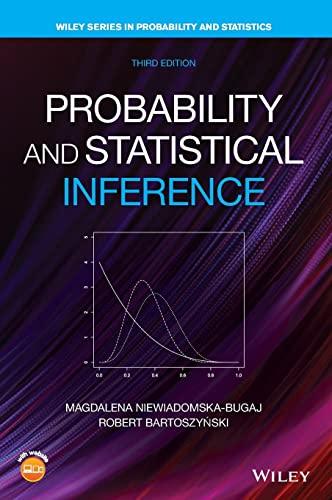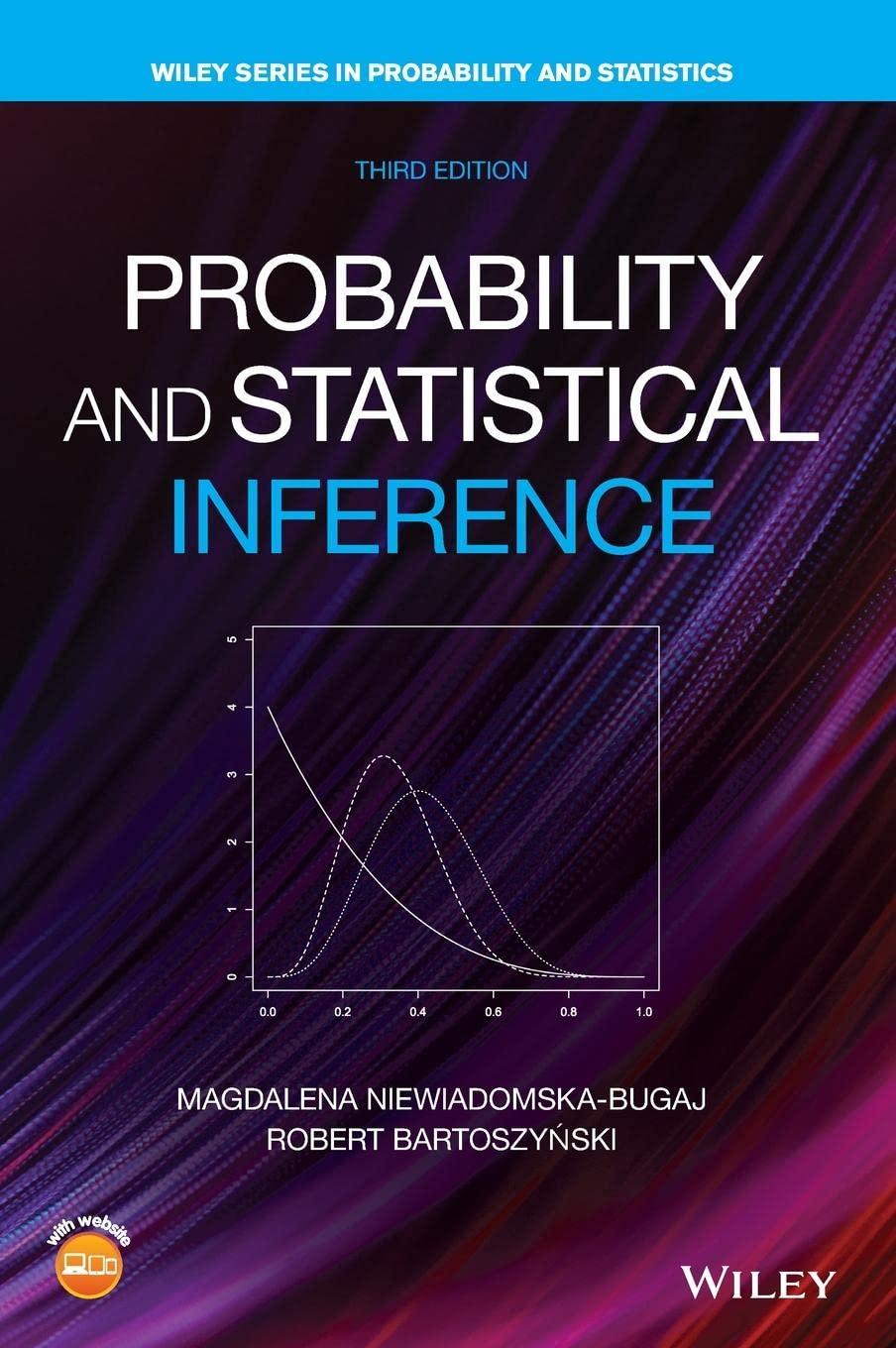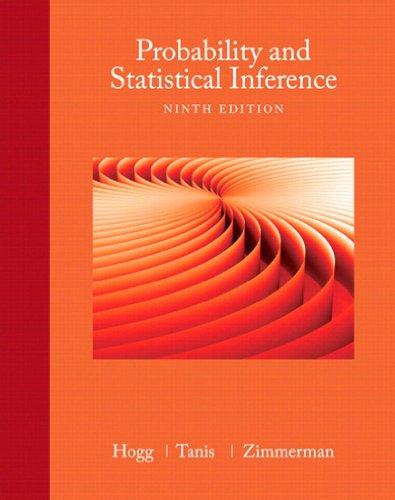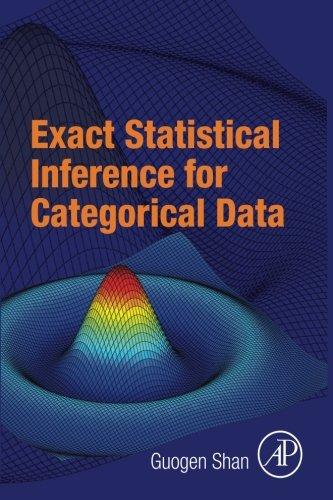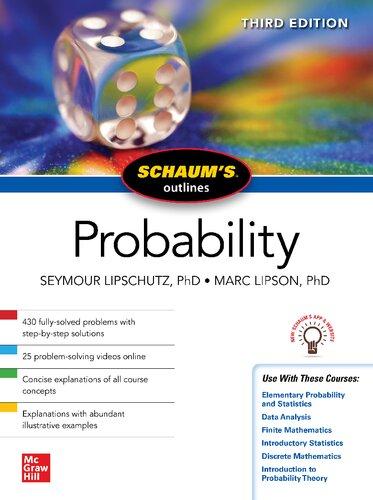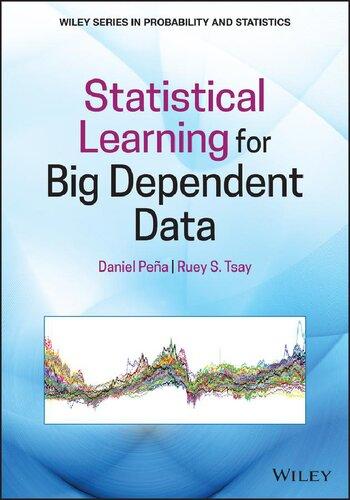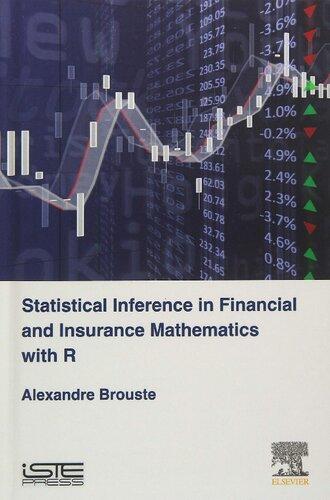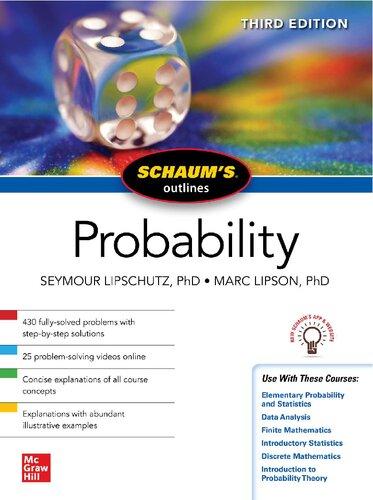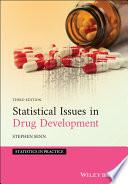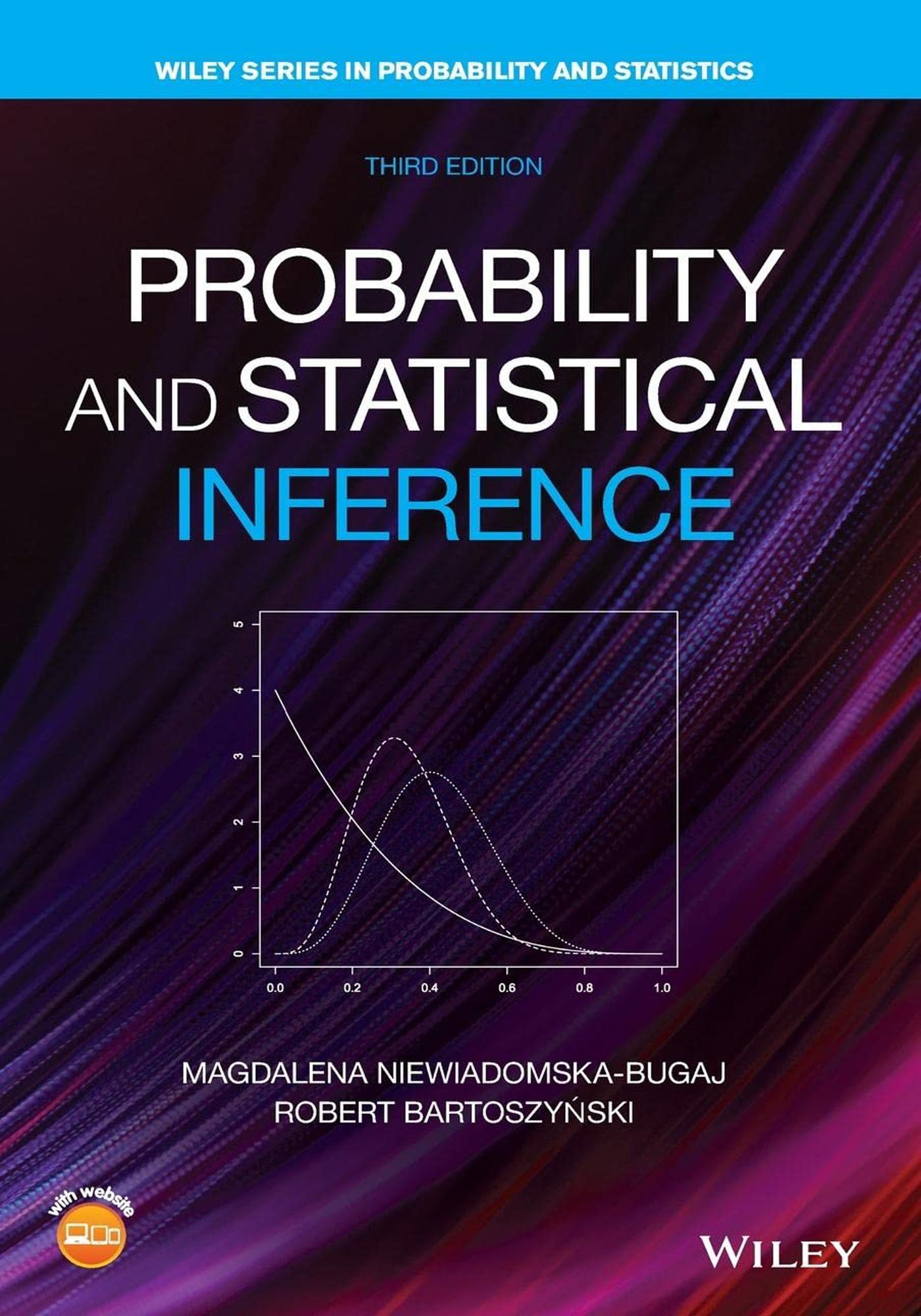EXPERIMENTS,SAMPLESPACES,AND EVENTS
1.1INTRODUCTION
Theconsequencesofmakingadecisiontodayoftendependonwhatwillhappeninthefuture, atleastonthefuturethatisrelevanttothedecision.Themainpurposeofusingstatistical methodsistohelpinmakingbetterdecisionsunderuncertainty.
Judgingfromthefailuresofweatherforecasts,tomorespectacularpredictionfailures, suchasbankruptciesoflargecompaniesandstockmarketcrashes,itwouldappearthat statisticalmethodsdonotperformverywell.However,withapossibleexceptionofweather forecasting,theseexamplesare,atbest,onlypartiallystatisticalpredictions.Moreover, failurestendtobebetterrememberedthansuccesses.Whateverthecase,statistical methodsareatpresent,andarelikelytoremainindefinitely,ourbestandmostreliable predictiontools.
Tomakedecisionsunderuncertainty,oneusuallyneedstocollectsome data.Datamay comefrompastexperiencesandobservations,ormayresultfromsomecontrolledprocesses, suchaslaboratoryorfieldexperiments.Thedataarethenusedtohypothesizeaboutthe laws(oftencalled mechanisms)thatgovernthefragmentofrealityofinterest.Inourbook, weareinterestedinlawsexpressedinprobabilisticterms:Theyspecifydirectly,orallowus tocompute,thechancesofsomeeventstooccur.Knowledgeofthesechancesis,inmost cases,thebestonecangetwithregardtopredictionanddecisions.
Probabilitytheoryisadomainofpuremathematicsandassuch,ithasitsownconceptualstructure.Toenableavarietyofapplications(typicallycomprisingofallareasofhuman endeavor,rangingfrombiological,medical,socialandphysicalsciences,toengineering, humanities,business,etc.),suchstructuremustbekeptonanabstractlevel.Anapplication ofprobabilitytotheparticularsituationanalyzedrequiresanumberofinitialstepsinwhich theelementsoftherealsituationare interpreted asabstractconceptsofprobabilitytheory.
ProbabilityandStatisticalInference,ThirdEdition.MagdalenaNiewiadomska-BugajandRobertBartoszy ´ nski. ©2021JohnWiley&Sons,Inc.Published2021byJohnWiley&Sons,Inc.
EXPERIMENTS,SAMPLESPACES,ANDEVENTS
Suchinterpretationisoftenreferredtoasbuildinga probabilisticmodel ofthesituationat hand.Howwellthisisdoneiscrucialtothesuccessofapplication.
Oneofthemainconceptshereisthatofan experiment—atermusedinabroadsense.It meansanyprocessthatgeneratesdatawhichisinfluenced,atleastinpart,bychance.
1.2SAMPLESPACE
Inanalyzinganexperiment,oneisprimarilyinterestedinits outcome—theconceptthat isnotdefined(i.e., aprimitiveconcept)buthastobespecifiedineveryparticularapplication.Thisspecificationmaybedoneindifferentways,withtheonlyrequirementsbeingthat (1)outcomesexcludeoneanotherand(2)theyexhaustthesetofalllogicalpossibilities.
EXAMPLE1.1
Consideranexperimentconsistingoftwotossesofaregulardie.Anoutcomeismost naturallyrepresentedbyapairofnumbersthatturnupontheupperfacesofthedie sothattheyformapair (x,y ),with x,y =1, 2,..., 6 (seeTable1.1).
Table1.1Outcomesonapairofdice. y 123456
1(1,1)(1,2)(1,3)(1,4)(1,5)(1,6) 2(2,1)(2,2)(2,3)(2,4)(2,5)(2,6) x 3(3,1)(3,2)(3,3)(3,4)(3,5)(3,6) 4(4,1)(4,2)(4,3)(4,4)(4,5)(4,6) 5(5,1)(5,2)(5,3)(5,4)(5,5)(5,6) 6(6,1)(6,2)(6,3)(6,4)(6,5)(6,6)
Inthecaseofanexperimentoftossingadiethreetimes,theoutcomeswill betriplets (x,y,z ),with x, y ,and z beingintegersbetween1and6.
Sincetheoutcomeofanexperimentisnotknowninadvance,itisimportanttodeterminethesetofallpossibleoutcomes.Thisset,calledthe samplespace,formstheconceptual frameworkforallfurtherconsiderationsofprobability.
Definition1.2.1 The samplespace,denotedby S ,isthesetofalloutcomesofanexperiment. Theelementsofthesamplespacearecalled elementary outcomes,or samplepoints
EXAMPLE1.2
InExample1.1,thesamplespace S has 62 =36 samplepointsinthecaseoftwotosses, and 63 =216 pointsinthecaseofthreetossesofadie.Thefirststatementcanbeverifiedbyadirectcountingoftheelementsofthesamplespace.Similarverificationofthe secondclaim,althoughpossibleinprinciple,wouldbecumbersome.InChapter3,we willintroducesomemethodsofdeterminingthesizesofsetswithoutactuallycounting samplepoints.
EXAMPLE1.3
Supposethattheonlyavailableinformationaboutthenumbers,thosethatturnupon theupperfacesofthedie,istheirsum.Insuchacaseasoutcomes,wetake11possible valuesofthesumsothat
Forinstance,alloutcomesonthediagonalofTable1.1—(6,1),(5,2),(4,3),(3,4), (2,5),and(1,6)—arerepresentedbythesamevalue7.
EXAMPLE1.4
Ifweareinterestedinthenumberofaccidentsthatoccuratagivenintersectionwithin amonth,thesamplespacemightbetakenastheset S = {0, 1, 2,... } consistingofall nonnegativeintegers.Realistically,thereisapracticallimit,say 1,000,ofthemonthly numbersofaccidentsatthisparticularintersection.Althoughonemaythinkthat itissimplertotakethesamplespace S = {0, 1, 2,..., 1,000}, itturnsoutthatitis oftenmuchsimplertotaketheinfinitesamplespaceifthe“practicalbound”isnot veryprecise.
Sinceoutcomescanbespecifiedinvariousways(asillustratedbyExamples1.1and1.3), itfollowsthatthesameexperimentcanbedescribedintermsofdifferentsamplespaces S Thechoiceofasamplespacedependsonthegoalofdescription.Moreover,certainsample spacesforthesameexperimentleadtoeasierandsimpleranalysis.Thechoiceofa“better” samplespacerequiressomeskill,whichisusuallygainedthroughexperience.Thefollowing twoexamplesillustratethispoint.
EXAMPLE1.5
Lettheexperimentconsistofrecordingthelifetimeofapieceofequipment,sayalight bulb.Anoutcomehereisthetimeuntilthebulbburnsout.Anoutcometypicallywill berepresentedbyanumber t ≥ 0 (t =0 ifthebulbisnotworkingatthestart),and therefore S isthenonnegativepartoftherealaxis.Inpractice, t ismeasuredwithsome precision(inhours,days,etc.),soonemightinsteadtake S = {0, 1, 2,... }.Whichof thesechoicesisbetterdependsonthetypeofsubsequentanalysis.
EXAMPLE1.6
Twopersonsenteracafeteriaandsitatasquaretable,withonechaironeachofits sides.Supposeweareinterestedintheevent“theysitatacorner”(asopposedtositting acrossfromoneanother).Toconstructthesamplespace,weletAandBdenotethe twopersons,andthentakeas S thesetofoutcomesrepresentedby12ideogramsin Figure1.1.Onecouldargue,however,thatsuchasamplespaceisunnecessarilylarge.
Ifweareinterestedonlyintheevent“theysitatacorner,”thenthereisnoneedto labelthepersonsasAandB.Accordingly,thesamplespace S maybereducedtothe setofsixoutcomesdepictedinFigure1.2.Buteventhissamplespacecanbesimplified. Indeed,onecouldusetherotationalsymmetryofthetableandarguethatoncethefirst personselectsachair(itdoesnotmatterwhichone),thenthesamplespaceconsistsof justthreechairsremainingforthesecondperson(seeFigure1.3).
Figure1.2 Possibleseatingsofanytwopersonsatasquaretable.
Figure1.3 Possibleseatingsofonepersoniftheplaceoftheotherpersonisfixed.
Samplespacescanbeclassifiedaccordingtothenumberofsamplepointstheycontain. Finite samplespacescontainfinitelymanyoutcomes,andelementsof infinitelycountable samplespacescanbearrangedintoaninfinitesequence;othersamplespacesarecalled uncountable.
Thenextconcepttobeintroducedisthatofan event.Intuitively,aneventisanything aboutwhichwecantellwhetherornotithasoccurred,assoonasweknowtheoutcomeof theexperiment.Thisleadstothefollowingdefinition:
Definition1.2.2 An event isasubsetofthesamplespace S .
EXAMPLE1.7
InExample1.1aneventsuchas“thesumequals7”containingsixoutcomes (1, 6), (2, 5), (3, 4), (4, 3), (5, 2), and (6, 1) isasubsetofthesamplespace S .In Example1.3,thesameeventconsistsofoneoutcome,7.
Whenanexperimentisperformed,weobserveitsoutcome.Intheinterpretationdevelopedinthischapter,thismeansthatweobserveapointchosenrandomlyfromthesample space.Ifthispointbelongstothesubsetrepresentingtheevent A,wesaythat theeventA hasoccurred
Wewillleteventsbedenotedeitherbyletters A,B,C,... ,possiblywithidentifiers,such as A1 ,Bk ,..., orbymoredescriptivemeans,suchas {X =1} and {a<Z<b},where X
and Z aresomenumericalattributesofthesamplepoints(formally:randomvariables,tobe discussedinChapter5).Eventscanalsobedescribedthroughverbalphrases,suchas“two headsinarowoccurbeforethethirdtail”intheexperimentofrepeatedtossesofacoin.
Inallcasesconsideredthusfar,weassumedthatanoutcome(apointinthesamplespace) canbeobserved.Toputitmoreprecisely,allsamplespaces S consideredsofarwereconstructedinsuchawaythattheirpointswereobservable.Thus,foranyevent A,wewere alwaysabletotellwhetheritoccurredornot.
Thefollowingexamplesshowexperimentsandcorrespondingsamplespaceswithsample pointsthatareonly partiallyobservable:
EXAMPLE1.8 Selection
Candidatesforacertainjobarecharacterizedbytheirlevel z ofskillsrequiredforthe job.Theactualvalueof z isnotobservable,though;whatweobserveisthecandidate’s score x onacertaintest.Thus,thesamplepointin S isapair s =(z,x),andonlyone coordinateof s, x,isobservable.
Theobjectivemightbetofindselectionthresholds z0 and x0 ,suchthattherule: “acceptallcandidateswhosescore x exceeds x0 ”wouldleadtomaximizingthe(unobservable)numberofpersonsacceptedwhosetruelevelofskill z exceeds z0 .Naturally, tofindsuchasolution,oneneedstounderstandstatisticalrelationbetweenobservable x andunobservable z
Anotherexamplewhenthepointsinthesamplespaceareonlypartiallyobservableconcernsstudiesofincidenceofactivitiesaboutwhichonemayhesitatetorespondtruthfully, oreventorespondatall.Thesearetypicallystudiesrelatedtosexualhabitsorpreferences, abortion,lawandtaxviolation,druguse,andsoon.
EXAMPLE1.9 RandomizedResponse
Let Q betheactivityanalyzed,andassumethattheresearcherisinterestedinthefrequencyofpersonswhoeverparticipatedinactivity Q (forsimplicity,wewillcallthem Q-persons).Itoughttobestressedthattheobjectiveis not toidentifythe Q-persons, butonlytofindtheproportionofsuchpersonsinthepopulation.
Thedirectquestionreducedtosomethinglike“Areyoua Q-person?”isnotlikelyto beansweredtruthfully,ifatall.Itisthereforenecessarytomaketherespondentsafe, guaranteeingthattheirresponseswillrevealnothingaboutthemasregards Q.This canbeaccomplishedasfollows:Therespondentisgivenapairofdistinguishabledice, forexample,onegreenandonewhite.Shethrowsthembothatthesametime,insuch awaythattheexperimenterdoesnotknowtheresultsofthetoss(e.g.,thediceareina boxandonlytherespondentlooksintotheboxafteritisshaken).Theinstructionisthe following:Ifthegreendieshowsanoddface(1,3,or5),thenrespondtothequestion “Areyoua Q-person?”Ifthegreendieshowsanevenface(2,4,or6),thenrespond tothequestion,“Doesthewhitedieshowanace?”Theschemeofthisresponseis summarizedbytheflowchartinFigure1.4.
Theinterviewerknowstheanswer“yes”or“no”butdoesnotknowwhetheritis theanswertothequestionabout Q orthequestionaboutthewhitedie.Hereanatural samplespaceconsistsofpoints s =(i,x,y ), where x and y areoutcomesongreenand whitedie,respectively,while i is1or0dependingonwhetherornottherespondentis a Q-person.Wehave φ(s)= φ(i,x,y )= “yes”if i =1 and x =1, 3, or5forany y ,or if x =2, 4, 6, and y =1 forany i.Inallothercases, φ(s)= “no.”
Areyoua Q-person?
Whitedie 123456
Figure1.4 Schemeofarandomizedresponse.
Onecouldwonderwhatisapossibleadvantage,ifany,ofnotknowingthequestion askedandobservingonlytheanswer.Thisdoesnotmakesenseifweneedtoknowthe truthabouteachindividualrespondent.However,oneshouldrememberthatweare onlyaftertheoverallfrequencyof Q-persons.
Weareinfact“contaminating”thequestionbymakingtherespondentanswer eithera Q-questionorsomeotherauxiliaryquestion.Butthisisa“controlled contamination”:weknowhowoften(onaverage)therespondentsanswerthe auxiliaryquestion,andhowoftentheiransweris“yes.”Consequently,aswewill seeinChapter11,wecanstillmakeaninferenceabouttheproportionof Q-persons basedontheobservedresponses.
PROBLEMS
1.2.1 Listallsamplepointsinsamplespacesforthefollowingexperiments: (i) Wetossa balancedcoin.1 Ifheadscomeup,wetossadie.Otherwise,wetossthecointwomore times. (ii) Acoinistosseduntilthetotaloftwotailsoccurs,butnomorethanfour times(i.e.,acoinistosseduntilthesecondtailorfourthtoss,whichevercomesfirst).
1.2.2 Alice,Bob,Carl,andDianaentertheelevatoronthefirstfloorofafour-storybuilding.Eachofthemleavestheelevatoroneitherthesecond,third,orfourthfloor. (i) Describethesamplespacewithoutlistingallsamplepoints. (ii) Listallsample pointssuchthatCarlandDianaleavetheelevatoronthethirdfloor. (iii) Listall samplepointsifCarlandDianaleavetheelevatoratthesamefloor.
1.2.3 Anurncontainsfivechips,labeled 1,..., 5.Threechipsareselected.Listalloutcomesincludedintheevent“thesecondlargestnumberdrawnwas3.”
1.2.4 Inagameofcraps,theplayerrollsapairofdice.Ifhegetsatotalof7or11,hewins atonce;ifthetotalis2,3,or12,helosesatonce.Otherwise,thesum,say x,ishis “point,”andhekeepsrollingdiceuntileitherherollsanother x (inwhichcasehe wins)orherollsa7inwhichcaseheloses.Describetheevent“theplayerwinswith apointof5.”
1 Unlessspecificallystated,wewillbeassumingthatallcoinsand/ordicetossedarefair(balanced).
1.2.5 Theexperimentconsistsofplacingsixballsinthreeboxes.Listalloutcomesinthe samplespaceif: (i) Theballsareindistinguishable,buttheboxesaredistinguishable. (Hint:Thereare28differentplacements.) (ii) Neithertheballsnortheboxesaredistinguishable. (iii) Twoballsarewhiteandfourarered;theboxesaredistinguishable.
1.2.6 JohnandMaryplantomeeteachother.Eachofthemistoarriveatthemeeting placeatsometimebetween5p.m.and6p.m.Johnistowait20minutes(oruntil 6p.m.,whichevercomesfirst),andthenleaveifMarydoesnotshowup.Mary willwaitonly5minutes(oruntil6p.m.,whichevercomesfirst),andthenleaveif Johndoesnotshowup.Letting x and y denotethearrivaltimesofJohnandMary, determinethesamplespaceanddescribeevents(i)–(viii)bydrawingpictures,orby appropriateinequalitiesfor x and y .Ifyouthinkthatthedescriptionisimpossible, sayso. (i) JohnarrivesbeforeMarydoes. (ii) JohnandMarymeet. (iii) EitherMary comesfirst,ortheydonotmeet. (iv) Marycomesfirst,buttheydonotmeet. (v) Johncomesverylate. (vi) Theyarrivelessthan15minutesapart,andtheydonot meet. (vii) Maryarrivesat5:15p.m.andmeetsJohn,whoisalreadythere. (viii) Theyalmostmissoneanother.
Problems1.2.7–1.2.8showanimportanceofthesamplespaceselection.
1.2.7 Let E betheexperimentconsistingoftossingacointhreetimes,withHandTstandingforheadsandtails,respectively.
(i) Thefollowingsetofoutcomesisanincompletelistofthepointsofthesample space S oftheexperiment E :{HHH,HTT,TTT,HHT,HTH,THH}.Useatree diagramtofindthemissingoutcomes.
(ii) Analternativesamplespace S forthesameexperiment E consistsofthefollowingfouroutcomes:noheads (0),onehead (1),twoheads (2), andthreeheads (3). Whichofthefollowingeventscanbedescribedassubsetsof S butnotassubsetsof S = {0, 1, 2, 3}?
A1 = Morethantwoheads.
A2 = Headonthesecondtoss.
A3 = Moretailsthanheads.
A4 = Atleastonetail,withheadonthelasttoss.
A5 = Atleasttwofacesthesame.
A6 = Headandtailalternate.
(iii) Stillanothersamplespace S fortheexperiment E consistsofthefouroutcomes (0, 0), (0, 1), (1, 0), and (1, 1).Thefirstcoordinateis1ifthefirsttwotossesshowthe samefaceand0otherwise;thesecondcoordinateis1ifthelasttwotossesshow thesameface,and0otherwise.Forinstance,ifweobserveHHT,theoutcomeis (1, 0).Listtheoutcomesof S thatbelongtotheevent A = {(1, 1), (0, 1)} of S . (iv) Whichofthefollowingeventscanberepresentedassubsetsof S ,butcannotbe representedassubsetsof S ?
B1 = Firstandthirdtossshowthesameface.
B2 = Headsonalltosses.
B3 = Allfacesthesame.
B4 = Eachfaceappearsatleastonce.
B5 = Moreheadsthantails.
1.2.8 Let E beanexperimentconsistingoftossingadietwice.Let S bethesamplespace withsamplepoints (i,j ),i,j =1, 2,..., 6, with i and j beingthenumbersofdots thatappearinthefirstandsecondtoss,respectively.
(i) Let S bethesamplespacefortheexperiment E consistingofallpossiblesums i + j sothat S = {2, 3,..., 12}.Whichofthefollowingeventscanbedefinedas subsetsof S butnotof S ?
A1 = Onefaceodd,theothereven.
A2 = Bothfaceseven.
A3 = Facesdifferent.
A4 = Resultonthefirsttosslessthantheresultonthesecond.
A5 = Productgreaterthan10.
A6 = Productgreaterthan30.
(ii) Let S bethesamplespacefortheexperiment E consistingofallpossibleabsolute valuesofthedifference |i j | sothat S = {0, 1, 2, 3, 4, 5}.Whichofthefollowing eventscanbedefinedassubsetsof S butnotof S ?
B1 = Onefaceshowstwiceasmanydotsastheother, B2 = Facesthesame,
B3 = Onefaceshowssixtimesasmanydotsastheother,
B4 = Onefaceodd,theothereven,
B5 = Theratioofthenumbersofdotsonthefacesisdifferentfrom1.
1.2.9 ReferringtoExample1.9,supposethatwemodifyitasfollows:Therespondent tossesagreendie(withtheoutcomeunknowntotheinterviewer).Iftheoutcomeis odd,herespondstotheQ-question;otherwise,herespondstothequestion“Were youborninApril?”Again,theinterviewerobservesonlytheanswer“yes”or“no.”
Apartfromtheobviousdifferenceinthefrequencyoftheanswer“yes”tothe auxiliaryquestion(ontheaverage1in12insteadof1in6),arethereanyessential differencesbetweenthisschemeandtheschemeinExample1.9?Explainyour answer.
1.3ALGEBRAOFEVENTS
Next,weintroduceconceptsthatwillallowustoformcompositeeventsoutofsimplerones. Webeginwiththerelationsof inclusion and equality.
Definition1.3.1 Theevent A is contained intheevent B ,or B contains A,ifeverysample pointof A isalsoasamplepointof B .Wheneverthisistrue,wewillwrite A ⊂ B ,orequivalently, B ⊃ A.
Analternativeterminologyhereisthat A implies (or entails) B .
Definition1.3.2 Twoevents A and B aresaidtobe equal, A = B ,if A ⊂ B and B ⊂ A.
Itfollowsthattwoeventsareequaliftheyconsistofexactlythesamesamplepoints.
EXAMPLE1.10
Considertwotossesofacoin,andthecorrespondingsamplespace S consistingoffour outcomes:HH,HT,TH,andTT.Theevent A = “headsinthefirsttoss” = {HH,HT} iscontainedintheevent B = “atleastonehead” = {HH,HT,TH}.Theevents“the resultsalternate”and“atleastoneheadandonetail”implyoneanother,andhence areequal.
Definition1.3.3 Thesetcontainingnoelementsiscalledthe empty setandisdenotedby ∅ Theeventcorrespondingto ∅ iscalleda null (impossible)event.
EXAMPLE1.11 *2
Thereadermaywonderwhetheritiscorrecttousethedefinitearticleinthedefinition aboveandspeakof“the emptyset,”sinceitwouldappearthattheremaybemany differentemptysets.Forinstance,thesetofallkingsoftheUnitedStatesandthesetof allrealnumbers x suchthat x2 +1=0 arebothempty,butoneconsistsofpeopleand theotherofnumbers,sotheycannotbeequal.Thisisnotso,however,asisshownby thefollowingformalargument(toappreciatethisargument,oneneedssometraining inlogic).Supposethat ∅1 and ∅2 aretwoemptysets.Toprovethattheyareequal,one needstoprovethat ∅1 ⊂∅2 and ∅2 ⊂∅1 .Formally,thefirstinclusionistheimplication: “if s belongsto ∅1 ,then s belongsto ∅2 .”Thisimplicationistrue,becauseitspremise isfalse:thereisno s thatbelongsto ∅1 .Thesameholdsforthesecondimplication,so ∅1 = ∅2
Wenowgivethedefinitionsofthreeprincipaloperationsonevents: complementation, union,and intersection
Definition1.3.4 Thesetthatcontainsallsamplepointsthatarenotintheevent A willbe calledthe complement of A anddenoted Ac ,tobereadalsoas“not A.”
Definition1.3.5 Thesetthatcontainsallsamplepointsbelongingeitherto A orto B (so possiblytobothofthem)iscalledthe union of A and B anddenoted A ∪ B ,tobereadas “A or B .”
Definition1.3.6 Thesetthatcontainsallsamplepointsbelongingtoboth A and B iscalled the intersection of A and B anddenoted A ∩ B .
Analternativenotationforacomplementis A or A,whereasinthecaseofanintersection, oneoftenwrites AB insteadof A ∩ B . Theoperationsabovehavethefollowinginterpretationsintermsofoccurrences ofevents:
1.Event Ac occursifevent A doesnotoccur.
2.Event A ∪ B occurswheneither A or B orbotheventsoccur.
3.Event A ∩ B occurswhenboth A and B occur.
EXAMPLE1.12
Consideranexperimentoftossingacointhreetimes,withthesamplespace consistingofoutcomesdescribedasHHH,HHT,andsoon.Let A and B be theevents“headsandtailsalternate”and“headsonthelasttoss,”respectively. Theevent Ac occursifeitherheadsortailsoccuratleasttwiceinarowsothat Ac = {HHH, HHT, THH, HTT, TTT, TTH},while B c is“tailsonthelast toss,”hence, B c = {HHT, THT, HTT, TTT}.Theunion A ∪ B istheevent “eithertheresultsalternateoritisheadsonthelasttoss,”meaning A ∪ B = {HTH, THT, HHH, THH, TTH}.Observethatwhile A hastwooutcomesand B has
2 Asterisksdenotemoreadvancedmaterial,asexplainedinthePrefacetotheSecondEdition.
fouroutcomes,theirunionhasonlyfiveoutcomes,sincetheoutcomeHTHappears inbothevents.Thiscommonpartistheintersection A ∩ B .
Someformulascanbesimplifiedbyintroducingtheoperationofthe difference oftwo events.
Definition1.3.7 The difference, A \ B, ofevents A and B containsallsamplepointsthat belongto A butnotto B
The symmetricdifference, A ÷ B ,containssamplepointsthatbelongto A orto B ,butnot tobothofthem:
EXAMPLE1.13
InExample1.12,thedifference B c \ A isdescribedas“atleasttwoidenticaloutcomes inarowandtailsonthelasttoss,”whichmeanstheevent{HHT,HTT,TTT}.
Next,weintroducethefollowingimportantconcept:
Definition1.3.8 If A ∩ B = ∅,thentheevents A and B arecalled disjoint,or mutually exclusive
EXAMPLE1.14
BasedonExample1.12,weknowthatthefollowingtwoeventsaredisjoint: C = “more headsthantails”andtheintersection A ∩ B c = “theresultsalternate,endingwith tails.”
Example1.14showsthattodeterminewhetherornoteventsaredisjoint,itisnotnecessarytolisttheoutcomesinbotheventsandcheckwhetherthereexistcommonoutcomes. Apartfromthefactthatsuchlistingisnotfeasiblewhensamplespacesarelarge,itisoften simplertoemploylogicalreasoning.Inthecaseabove,iftheresultsalternateandendwith tails,thentheoutcomemustbeTHT.Sincetherearemoretailsthanheads, C doesnotoccur. Thedefinitionsofunionandintersectioncanbeextendedtothecaseofafiniteandeven infinitenumberofevents(tobediscussedintheSection1.4).Thus,
istheeventthatcontainsthesamplepointsbelongingto A1 or A2 or...or An .Consequently,(1.1)istheevent“atleastone Ai occurs.”Similarly,
istheeventthatcontainsthesamplepointsbelongingto A1 and A2 and...and An .Consequently,theevent(1.2)is“all Ai ’soccur.”
EXAMPLE1.15
Supposethat n shotsarefiredatatarget,andlet Ai , i =1, 2,...,n denotetheevent “thetargetishitonthe ithshot.”Then,theunion A1 ∪···∪ An istheevent“the
targetishit”(atleastonce).Itscomplement (A1 ∪···∪ An )c istheevent“thetarget ismissed”(oneveryshot),whichisthesameastheintersection Ac 1 ∩···∩ Ac n
Aperceptivereadermaynotethattheunions A1 ∪···∪ An andintersections A1 ∩···∩ An donotrequireanextensionofthedefinitionofunionandintersectionfor twoevents.Indeed,wecouldconsiderunionssuchas
, wheretheunionofonlytwoeventsisformedineachsetofparentheses.Theproperty ofassociativity(below)showsthatparenthesescanbeomittedsothattheexpression A1 ∪···∪ An isunambiguous.Thesameargumentappliestointersections. Theoperationsoneventsdefinedinthissectionobeysomelaws.Themostimportantones arelistedbelow.
Idempotence:
Doublecomplementation:
Absorption
Inparticular,
whichinviewof(1.3)meansthat
Commutativity:
Associativity:
Distributivity:
DeMorgan’sLaws
ItisoftenhelpfultouseVenndiagramsforstudyingrelationsbetweencompositeevents inthesamesamplespace.Thesamplespace S isthererepresentedbyarectangle,whileits subsetsrepresentevents(seeFigure1.5).
Thecomplementofevent A isrepresentedinFigure1.5a,theunionandintersectionof theevents A and B arerepresentedinFigure1.5bandc,respectively.
Venndiagramscanalsobeusedtocheckthevalidityofformulas.Forexample,consider thefirstDeMorgan’slaw(1.4)forthecaseoftwoevents:
Figure1.5 Complement,union,andintersection.
ThefirstDeMorgan’slaw.
Venndiagramsmadeseparatelyfortheleft-handsideandtheright-handsideof(1.5)(see Figure1.6)indicatethatbothregionsarethesame.Althoughapicturedoesnotconstitute aproof,itmayprovideconvincingevidencethatthestatementistrue,andsometimesmay evensuggestamethodofprovingthestatement.
PROBLEMS
Fortheproblemsbelow,rememberthatastatement(expressedasasentenceorformula)is trueifitistrueunder all circumstances,anditisfalseifthereisatleastonecasewhereit doesnothold.
1.3.1 Answertrueorfalse.Justifyyouranswer. (i) If A and B aredistinctevents(i.e., A = B ) suchthat A and B c aredisjoint,then Ac and B arealsodisjoint. (ii) If A and B are disjoint,then Ac and B c arealsodisjoint. (iii) If A and B aredisjoint,andalso B and C aredisjoint,then A and C aredisjoint. (iv) If A and B arebothcontainedin C , then C c ⊂ Ac ∩ B c (v) If A iscontainedin B , C iscontainedin D, and B isdisjoint from D ,then A isdisjointfrom C (vi) If A ∪ B c = B c ,then B ⊂ Ac
1.3.2 Inthestatementsbelow A,B,C ,and D areevents.Findthosestatementsorformulas thataretrue. (i) If A ∩ B = A ∩ C ,then B = C . (ii) A ∪ (A ∩ B ) ∪ (A ∩ B c )= A. (iii) A ∪ (A ∩ B ) ∪ (A ∩ B c )= B . (iv) If A \ B = C ,then A = B ∪ C . (v) (A ∪ B ) ∩ (C ∪ D )=(A ∩ C ) ∪ (A ∩ D ) ∪ (B ∩ C ) ∪ (B ∩ D ). (vi) (A ∩ B ) ∪ (C ∩ D )=(A ∪ C ) ∩ (A ∪ D ) ∩ (B ∪ C ) ∩ (B ∪ D ). (vii) (Ac ∪ B c ∪ C c )c = Ac ∩ B c ∩ C c . (viii) If A ⊂ B ,and B ∩ C = ∅,then C c ∩ A ∩ B c = ∅ (ix) If A ∩ B , A ∩ C and B ∩ C are notempty,then A ∩ B ∩ C isnotempty. (x) Showthat (A ÷ B ) ÷ C = A ÷ (B ÷ C )
1.3.3 Find X if: (i) A ÷ X = ∅. (ii) A ÷ X = A. (iii) A ÷ X = S . (iv) A ÷ X = B .
1.3.4 Inagroupof1,000studentsofacertaincollege,60takeFrench,417takecalculus, and509takestatistics.Moreover,20takeFrenchandcalculus,17takeFrenchand statistics,and147takestatisticsandcalculus.However,196studentsdonottakeany
Figure1.6
ofthesethreesubjects.DeterminethenumberofstudentswhotakeFrench,calculus, andstatistics.
1.3.5 Let A, B, and C bethreeevents.Match,wherepossible,events D1 through D10 with events E1 through E11 .Matchingmeansthattheeventsareexactlythesame;thatis, ifoneoccurs,somusttheotherandconversely(seetheDefinition1.3.2).(Hint:Draw aVenndiagramforeachevent D1 ,...,D10 , dothesameforevents E1 ,...,E11 ,and thencomparethediagrams.)
Amongevents A, B , C :
D1 = twoormoreoccur.
D3 = only A occurs.
D5 = noneoccurs.
D7 = atleastoneoccurs.
D9 = nomorethantwooccur.
E1 = A ∪ B ∪ C.
D2 = exactlyoneoccurs.
D4 = alloccur.
D6 = atmostoneoccurs.
D8 = exactlytwooccur.
D10 = B occurs.
E2 =(A ∩ B c ∩ C c ) ∪ (Ac ∩ B ∩ C c )
E3 =(A ∩ B )c
E4 =(A ∪ B ∪ C )c .
E5 = Ac ∩ B c ∩ C c
E6 = A ∩ B ∩ C.
E7 = B.
E8 = A ∩ B c ∩ C c
E9 =(A ∩ B ∩ C c ) ∪ (A ∩ B c ∩ C ) ∪
E10 =(A ∩ B
E11 =(
1.3.6 Astandarddeckofcardsisdealtamongplayers N,S,E, and W .Let Nk ,k =1, 2, 3, 4 betheevent“N hasatleast k aces,”andlet Sk ,Ek ,and Wk bedefinedsimilarly.For eachoftheeventsbelow,determinethenumberofacesthat N has. (i)
W1 . (ii) E2 ∩ (W2 ∪ S2 ). (iii) N3 \ N4 . (iv) S3
1.3.7 Fiveburglars, A,B,C,D, and E ,dividetheloot,consistingoffiveidenticalgoldbars andfouridenticaldiamonds.Let Ajk betheeventthat A got atleast j goldbarsand atmost k diamonds.Let Bjk ,Cjk denoteanalogouseventsforburglars B,C (e.g., B21 istheeventthat B got2,3,4,or5goldbarsand0or1diamond).Determinethe number x ofgoldbarsandthenumber y ofdiamondsreceivedby E ifthefollowing eventsoccur(ifdeterminationof x and/or y isimpossible,givetherangeofvalues):
C13 ∪ D13
1.3.8 Let A
bedefinedinductivelyby
1.4INFINITEOPERATIONSONEVENTS
Asalreadymentioned,theoperationsofunionandintersectioncanbeextendedtoinfinitely manyevents.Let A1 ,A2 ,... beaninfinitesequenceofevents.Then,
areevents“atleastone
Ifatleastoneevent Ai occurs,thenthereisonethatoccursfirst.Thisremarkleadstothe followingusefuldecompositionofaunionofeventsintoaunionof disjoint events:
where Ac 1 ∩···∩ Ac k 1 ∩ Ak istheevent“Ak isthefirsteventinthesequencethatoccurs.”
Foraninfinitesequence A1 ,A2 ,... onecandefinetwoevents:
and
thesebeing,respectively,theeventthat“infinitelymany Ai ’soccur”andtheeventthat“all exceptfinitelymany Ai ’soccur.”Heretheinnerunionintheevent(1.7)istheevent“atleast oneevent Ai with i ≥ k willoccur”;callthisevent Bk .Theintersectionover k meansthat theevent Bk occursforevery k .Nomatterhowlarge k wetake,therewillbeatleastone event Ai with i ≥ k thatwilloccur.Butthisispossibleonlyifinfinitelymany Ai soccur.
Fortheevent liminf An ,theargumentissimilar.Theintersection Ak ∩ Ak +1 ∩··· = Ck occursifallevents Ai with i ≥ k occur.Theunion C1 ∪ C2 ∪··· meansthatatleastoneof theevents Ck willoccur,andthatmeansthatall Ai willoccur,exceptpossiblyfinitelymany. Ifallevents(exceptpossiblyfinitelymany)occur,theninfinitelymanyofthemmust occur,sothat limsup An ⊃ liminf An .If limsup An ⊂ liminf An , then(seethedefinition ofequalityofevents)wesaythatthesequence {An } converges,and limsup An =liminf An
Themostimportantclassofconvergentsequencesofeventsconsistsof monotone sequences,when A1 ⊂ A2 ⊂··· (increasingsequence)orwhen A1 ⊃ A2 ⊃··· (decreasing sequence).Wehavethefollowingtheorem:
Theorem1.4.1 Ifthesequence A1 ,A2 ,... isincreasing,then
An =
, andincaseofadecreasingsequence,wehave
=1
An =
Proof :Ifthesequenceisincreasing,thentheinnerunion( ∞ i=1 Ai )in limsup An remains thesameindependentlyof k sothat limsup An = ∞ i=1 Ai .Ontheotherhand,theinner intersectionin liminf An equals Ak sothat liminf An = ∞ k =1 Ak ,whichisthesameas limsup An ,aswastobeshown.Asimilarargumentholdsfordecreasingsequences.
Thefollowingtwoexamplesillustratetheconceptofconvergenceofevents.
EXAMPLE1.16
Let B (r ) and C (r ) bethesetsofpointsontheplane (x,y ) satisfyingtheconditions x2 + y 2 <r 2 and x2 + y 2 ≤ r 2 , respectively.If An = B (1+1/n),then {An } isa decreasingsequence,andtherefore lim An = ∞ n=1 B (1+1/n).Since x2 + y 2 <
